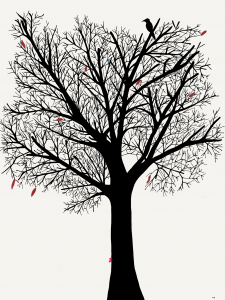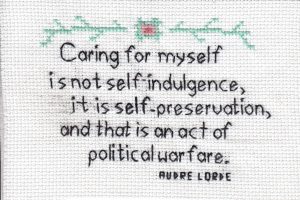Vernal Equinox
It’s Spring and the recent trip around the sun finds me with some thoughts about fresh starts, green grass, and bunny rabbits bouncing around meadows laying chocolate eggs. Well at least the chocolate part is plausible. Thank you Cadbury. Anything to get my mind off of the fact that more and more schools are closing due to cases of COVID 19. Looking for any rays of hope, my thoughts turned to vaccinations. Now that we have those life saving jabs ready to distribute, things have to get better. Right?
For better or worse?
My daily exposure to people in my school is around 300 people. That is 20 times greater than the promised/recommended class size for safe in person learning, and 100 times greater than at home. Who am I kidding? It’s exponentially bigger than that as each student has their own web of contacts. Like all educators, I have taken the safety precautions seriously because lives are at stake. Mine and my family members’ at home and school. All I needed to do was remain diligent, follow the protocols, and maintain my distances.
I did find some comfort knowing vaccines were coming. Having ignorantly assured myself, in January, that our provincial government would priortize educators to receive their shots (I’ll wait for you to stop laughing at my naivete). If not so much for our protection, but so that schools could remain safely opened as promised when “no expenses would be spared” was the promise. Our students needed to be back at school so their safety had to be guaranteed. Ventilation, new PPE, increased safety protocols, nurses(heard that one before), and mental health matters.
Meanwhile, at schools a different reality is playing out. Exhaustion and exhasperation while the world around us becomes smaller and smaller through restricted movement, cohorting, fatigue, anxiety, grief, fighting to speak while constantly masked, and becoming an expert at keeping 2 metres apart outside, but only 1 metre apart inside. Don’t forget the learning. What could possibly go wrong or be wrong with such a sweet set up for a learner’s success?
Gorilla in a sport coat
As an educator, nothing says, “You are NOT important to me.” like not being included in the first rounds of vaccinations. This only seemed logical as the numbers of new infections, hospitalizations, and ICU cases were climbing again through the winter and new year break. I take no joy in knowing that they are on the rise again.
The 800 pound gorilla who promised everyone would be safe, especially front-line workers, must have been distracted by something shiny on a can of buck a beer. 3 months into 2021, and despite ETFO demands for action, nothing has been done that gives me or my colleagues confidence that our health and safety are important to the sport coat set in government. As a frontline worker, I can’t help but feel saddened by the obvious message our current provincial government is sending the public about how little it values our profession by not including educators earlier on for vaccinations. Sadly, this inaction and lack of any rational thought of the long term costs will leave all Ontarians crumpling under the weight of lost lives and lost opportunities.
Is it me or are things getting heavier?
The past 3 months on-line and in person have been exhausting. There has not been a single day where I arrive home and am not wiped out mentally and physically. My students are too. This is like being asked to fix a leak on a dam with Play Doh and being told to hold it in place while the water on the other side evapourates.
January passes by, and February too, yet still little concrete news of when educators would be vaccinated. March arrives, our break is postponed in order to save the province from its collective irresponsibilty due to out of country travel and attending large super-spreader events. Now I am thinking about how each school with a case of COVID has the power to become a pint sized super-spreader event.
At my school and hundreds of others, we have had numerous students going home each week due to precautions. As of March 30th a whole class at my school is in isolation as a precaution. This is playing out across the province while restrictions are easing? If this isn’t reason enough for us to be vaccinated sooner rather than later based on data, then perhaps an appealing to compassion would be better since reason is off the table? Who am I kidding? Compassion is not part of their vocabulary because it gets in the way of patronage and profits.
As the inevitability of another lockdown looms in April, I encourage you all to stay safe and continue standing up for our students and profession as you have each and everyday. Make sure to look after yourselves too. I pray that, when this is all over, the ones who were entrusted to look after the health and safety of our public and failed will not be able to hurt our schools anymore.

 For me as a kid, there was no better feeling than opening up a new box of 64 Crayola crayons. The big box with the flip top lid and the sharpener on the side. I can remember agonizing over which colour to pick first and being so thrilled by the perfection of the colour palette in neat rows in that box. I loved to draw and colour. I could do it for hours never lifting my attention from the page. In adulthood, I abandoned doing art for pleasure. It seemed silly for me to sit around and draw or paint for no real reason. I felt I should be doing something productive. A few years ago I began to create art again and realized how much I had missed it and how much joy it brought to my life. I create digital art now, which isn’t quite the same rush as opening a box of crayons but it is easier to share with others-like the picture above. I have recently learned about the health and wellness benefits of creating. Creating is rejuvenating, it is rest and it is soul food.
For me as a kid, there was no better feeling than opening up a new box of 64 Crayola crayons. The big box with the flip top lid and the sharpener on the side. I can remember agonizing over which colour to pick first and being so thrilled by the perfection of the colour palette in neat rows in that box. I loved to draw and colour. I could do it for hours never lifting my attention from the page. In adulthood, I abandoned doing art for pleasure. It seemed silly for me to sit around and draw or paint for no real reason. I felt I should be doing something productive. A few years ago I began to create art again and realized how much I had missed it and how much joy it brought to my life. I create digital art now, which isn’t quite the same rush as opening a box of crayons but it is easier to share with others-like the picture above. I have recently learned about the health and wellness benefits of creating. Creating is rejuvenating, it is rest and it is soul food.

